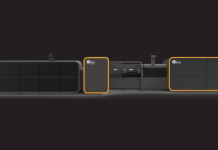According to SNA Display’s communication associate, Zachary Todd, writing for Digital Signage Today, given the improvements in large-scale digital display technology and the mind-boggling capabilities of content creators, immersive experiences via direct-view LED are an unstoppable trend.
Not to get too philosophical, but experience is everything, isn’t it? The way we humans observe and interact with the world around (and within) us provides context for — even dictates — every facet of our lives. It would be no surprise, then, that some primitive form of experience design has existed for ages.
Way back in the 1990s, around the time Don Norman was hired by struggling computer company Apple, experience design began its emergence into the field it is today. Norman, who wrote the influential book The Design of Everyday Things, was perhaps the most notable pioneer in user experience (UX) and experience design (XD).
The last two decades have yielded warp-speed advancements in digital technologies, including a pretty big thing you may have heard of known as the internet. As a result, design know-how and paradigm-shifting design tools have emerged. These days, designers carefully craft everything from buildings to public spaces to websites to phone apps with the users’ needs and emotions front and centre. If done well, users typically don’t consciously recognise that their experience was largely designed. Bad design, however, usually sticks out like a sore thumb.
A major facet of experience-centred design is the growing interest in immersive experience. Although commonly thought of in terms of an individual being cast into some illusory world via virtual reality, we can more broadly define this as one’s experience of being immersed in an environment.
This might involve larger-than-life murals, stitched-together video, projection mapping, synchronised lighting and imagery and other large-scale productions that envelop viewers and focus their senses. Think of a museum curator, artist, building architect, theme park designer or game creator intent on creating an experience that briefly mutes unrelated sensory input and elicits a desired emotion or response.
Once essentially glorified, rectangular television screens used for information display and footage playback, LED displays are now being used in myriad ways to immerse viewers in captivating and memorable experiences. This is due to a number of factors including design flexibility, scalability, decreased cost, improved technology (especially with pixel density), advanced control software, more sophisticated processing, and again, uber-talented content creators.
Immersive-experience applications for LED video technology are virtually (pun intended) limitless, but some of the more prominent examples are seen in museums, the corporate sector and the entertainment industry.
A study by the Cleveland Museum of Art collected visitor data from November 2017 to January 2018 shows the power of digital technology over more traditional museum presentations.
Tellingly, those participants who visited the digital gallery felt less confident about their museum knowledge than those who didn’t. But when surveyed after, both groups expressed the same amount of confidence about their understanding of the museum’s art, suggesting that those who experienced the ARTLENS gallery were both more inclined to learn and did indeed learn more. Millennials were 15% more likely to visit the digital galleries than older adults (44% compared to 29%, respectively) and 88% said that the digital component of their visits made them appreciate the value of an art museum.
Immersive experiences like those found increasingly in museums can be groundbreaking educational opportunities. For example, The University Libraries at Virginia Tech created a virtual walkthrough of the post-World War I tunnels in the French village of Vauquois ‘to be rich in history, information and to encourage empathy as users discover what it was like to be a soldier during that time’.
As John Bricker, Gensler’s creative director, stated for the global design and architecture firm’s piece on Reimagining the Museum Experience for a Digital Era, ‘Museums today are not just about seeing art. They’re competing against theatre, film and other activities. To capture attention, there needs to be a compelling reason to come.’
In 2019, the San Francisco Museum of Modern Art hosted a digital art installation known as The Chronicles of San Francisco by internationally renowned artist JR. To create the piece, JR, a street artist traditionally known for his printed murals, set up a mobile studio in 22 locations around San Francisco, where he filmed, photographed and interviewed more than 1200 people from across the city’s multifaceted communities.
In the completed work, a massive digital mural brings together the faces and untold stories of everyday people. The award-winning exhibit featured a 32.6m (107 foot) long LED display that curved around the room. While not fully immersed, visitors standing in front of the high 4.8m (16 foot) video screen could easily get lost in the digital art piece’s 26 million pixels.
Corporate locations can create immersive LED experiences in many ways. One method involves sheer size, such as the lobby video wall in the Salesforce East skyscraper at 350 Mission St. in San Francisco. The display is over 232 square metres (2500 square feet) and uses 6.7 million pixels to captivate viewers both outside and inside the lobby. With the right content, a giant video wall pulls a viewer into a digital world that stimulates creativity and imagination. That’s the kind of immersive experience that corporate and retail establishments strive for.
Another method for crafting immersive experiences with LED display technology relies more on complexity than raw volume, though the displays at Salesforce Tower San Francisco and Salesforce West by no means skimp on square footage. One of the critical elements of the design for the Salesforce West display was properly positioning the screen around the lobby’s elevator entrances, allowing the massive digital wall to become a part of the lobby architecture without being intrusive. When the screen’s most iconic content is playing on the display, walking to the elevators creates the illusion of passing through a real-life waterfall.
No discussion of immersive experiences, digital or otherwise, would be complete without a trip to the movies. For years now, the entertainment industry has been finding ways to make the silver screen more immersive, often taking the form of IMAX or Omnimax theaters.
However, digital display technology doesn’t begin and end when moviegoers get comfortable with their popcorn. Increasingly, it’s actually part of the movie-making process itself.
‘Fine pitch LED has matured to a point that production companies and directors are cutting over from shooting scenes in front of giant green screens to shooting them in front of giant fine-pitch LED video walls, flat and curved,’ according to Dave Haynes in an article from his digital signage blog Sixteen:Nine.
The most buzzworthy example of using LED video walls as virtual movie sets is the popular live-action ‘Star Wars’ television series ‘The Mandalorian.’ When done right, the digital canvas offers indispensable versatility and aesthetic appeal at increasingly affordable prices. Immersive experiences that produce genuine emotional responses will continue to proliferate and people of all ages and backgrounds seem to instinctively gravitate to memorable shared experiences. As LED technology improves, limited only by the imagination, their incorporation into immersive experiences will continue to grow.
This article appears in Digital Signage Today.















